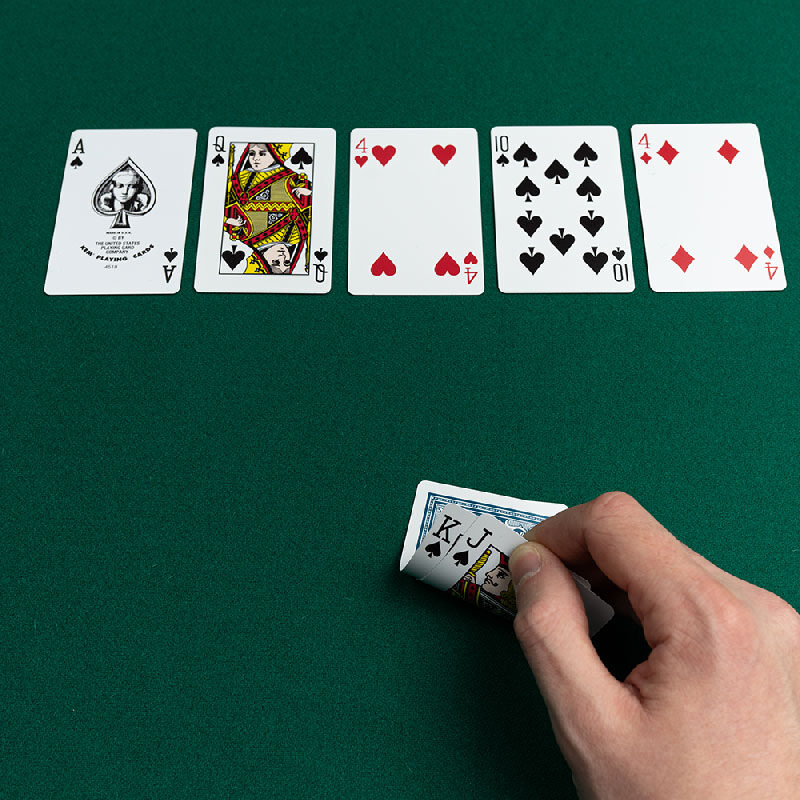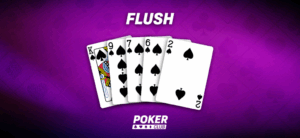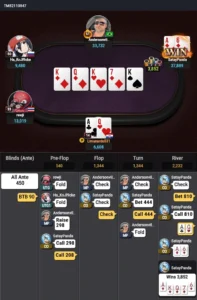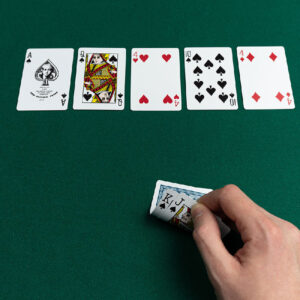What Is a Full House in Poker?
A full house consists of three cards of the same rank combined with two cards of another rank. For example, three Queens and two Sixes (Q♠ Q♦ Q♣ 6♥ 6♠) form a full house. This hand is also known as a “full boat.”
Full House Poker Hand Rules
- Ranking: A full house ranks above a flush and below four of a kind.
- Tiebreakers: If two players have a full house, the one with the higher three-of-a-kind wins.
- Best 5-Card Combination: In Texas Hold’em, the best five-card combination matters, even if you have more than five cards that could make multiple full houses.
Examples of Full House Hands
Let’s look at two examples to make things clear:
- Example 1: Player A has 9♣ 9♦ and the board is 9♥ 5♠ 5♦ K♠ Q♠ — full house, Nines full of Fives.
- Example 2: Player B has K♣ K♥ and the board is K♦ 3♣ 3♠ 7♣ 2♠ — full house, Kings full of Threes.
How to Form a Full House
Full houses can be made using your hole cards and community cards in games like Texas Hold’em and Omaha. You typically need a pair and a three-of-a-kind from your seven total cards (two hole cards + five community cards).
Probability of Getting a Full House
The probability of making a full house by the river in Texas Hold’em is around 2.6% if you start with a pocket pair. It’s not common, but it’s not too rare either, making it a valuable hand in many situations.
Strategic Tips for Playing a Full House
- Disguise your hand: Don’t be overly aggressive early on if you’re trying to extract value.
- Play position: Use your position to read opponents’ reactions before betting.
- Bet sizing: Adjust your bet sizes based on the board texture and perceived strength.
Common Mistakes Beginners Make
- Overestimating a weak full house: A full house made with low cards can still lose to higher full houses.
- Not considering quads: If the board is heavily paired, be cautious of four-of-a-kind possibilities.
- Ignoring kicker strength: Always consider potential kicker cards when the board is close.
Conclusion
Understanding full house poker hand rules gives you a strong advantage at the table. With strategic thinking, careful play, and a little bit of luck, a full house can be your ticket to winning big.





